Here is a script that works:
function colorDuplicates() {
var ss = SpreadsheetApp.getActiveSpreadsheet().getActiveSheet();
var lr = ss.getLastRow();
var column = 1
ss.getRange(2, column, lr).setBackground(null);
var color = ["#EA9999","#F9CB9C","#FFE599","#B6D7A8","#A2C4C9","#9FC5E8","#B4A7D6","#D5A6BD","#CCCCCC","#B45F06","#666666","#FF0000","#FF9900","#FFFF00","#00FF00","#00FFFF"];
var c = 0;
var checkcolor = false;
for (var i = 2; i < lr+1;i++){
if (checkcolor == true) {
c++;
checkcolor = false;
}
var a = ss.getRange(i, column).getValue();
if (a == "") {continue;}
var cellcolor = ss.getRange(i, column).getBackground();
if (cellcolor != "#ffffff") {continue;}
for (var j = i+1;j< lr+1;j++){
var b = ss.getRange(j, column).getValue();
if (a != b) {continue;}
var cellcolor = ss.getRange(j, column).getBackground();
if (cellcolor != "#ffffff") {continue;}
ss.getRange(i, column).setBackground(color[c]);
ss.getRange(j, column).setBackground(color[c]);
checkcolor = true;
}
}
}
function colorDuplicates2() {
var ss = SpreadsheetApp.getActiveSpreadsheet().getActiveSheet();
var lr = getLastRowSpecial(ss.getRange("A:A").getValues());
var lc = ss.getLastColumn();
ss.getRange(2, 1, lr).setBackground(null);
ss.insertColumnAfter(lc);
ss.getRange(1, lc+1).setFormula("=FILTER(UNIQUE(A2:A);UNIQUE(A2:A)<>\"\")"); // Change the ";" for a "," if you are in the us
var numValues = getLastRowSpecial(ss.getRange(1, lc+1, lr).getValues());
var values = new Array(36);
for (var a = 1;a<numValues+1;a++){
values[a] = String(ss.getRange(a, lc+1).getValue());
}
var color = ["#980000", "#ff0000", "#ff9900", "#ffff00", "#00ff00", "#00ffff", "#4a86e8", "#0000ff", "#9900ff", "#ff00ff", "#e6b8af", "#f4cccc", "#fce5cd", "#ea9999", "#f9cb9c", "#ffe599", "#b6d7a8", "#a2c4c9", "#a4c2f4", "#9fc5e8", "#b4a7d6", "#d5a6bd", "#cc4125", "#e06666", "#f6b26b", "#ffd966", "#93c47d", "#76a5af", "#6d9eeb", "#6fa8dc", "#8e7cc3", "#c27ba0", "#a61c00", "#cc0000", "#e69138", "#f1c232", "#6aa84f", "#45818e", "#3c78d8", "#3d85c6", "#674ea7", "#a64d79", "#85200c", "#990000"];
for (var i = 2;i<lr+1;i++){
switch (String(ss.getRange(i, 1).getValue())) {
case values[1]:
ss.getRange(i, 1).setBackground(color[1]);
break;
case values[2]:
ss.getRange(i, 1).setBackground(color[2]);
break;
case values[3]:
ss.getRange(i, 1).setBackground(color[3]);
break;
case values[4]:
ss.getRange(i, 1).setBackground(color[4]);
break;
case values[5]:
ss.getRange(i, 1).setBackground(color[5]);
break;
case values[6]:
ss.getRange(i, 1).setBackground(color[6]);
break;
case values[7]:
ss.getRange(i, 1).setBackground(color[7]);
break;
case values[8]:
ss.getRange(i, 1).setBackground(color[8]);
break;
case values[9]:
ss.getRange(i, 1).setBackground(color[9]);
break;
case values[10]:
ss.getRange(i, 1).setBackground(color[10]);
break;
case values[11]:
ss.getRange(i, 1).setBackground(color[11]);
break;
case values[12]:
ss.getRange(i, 1).setBackground(color[12]);
break;
case values[13]:
ss.getRange(i, 1).setBackground(color[13]);
break;
case values[14]:
ss.getRange(i, 1).setBackground(color[14]);
break;
case values[15]:
ss.getRange(i, 1).setBackground(color[15]);
break;
case values[16]:
ss.getRange(i, 1).setBackground(color[16]);
break;
case values[17]:
ss.getRange(i, 1).setBackground(color[17]);
break;
case values[18]:
ss.getRange(i, 1).setBackground(color[18]);
break;
case values[19]:
ss.getRange(i, 1).setBackground(color[19]);
break;
case values[20]:
ss.getRange(i, 1).setBackground(color[20]);
break;
case values[21]:
ss.getRange(i, 1).setBackground(color[21]);
break;
case values[22]:
ss.getRange(i, 1).setBackground(color[22]);
break;
case values[23]:
ss.getRange(i, 1).setBackground(color[23]);
break;
case values[24]:
ss.getRange(i, 1).setBackground(color[24]);
break;
case values[25]:
ss.getRange(i, 1).setBackground(color[25]);
break;
case values[26]:
ss.getRange(i, 1).setBackground(color[26]);
break;
case values[27]:
ss.getRange(i, 1).setBackground(color[27]);
break;
case values[28]:
ss.getRange(i, 1).setBackground(color[28]);
break;
case values[29]:
ss.getRange(i, 1).setBackground(color[29]);
break;
case values[30]:
ss.getRange(i, 1).setBackground(color[30]);
break;
case values[31]:
ss.getRange(i, 1).setBackground(color[31]);
break;
case values[32]:
ss.getRange(i, 1).setBackground(color[32]);
break;
case values[33]:
ss.getRange(i, 1).setBackground(color[33]);
break;
case values[34]:
ss.getRange(i, 1).setBackground(color[34]);
break;
case values[35]:
ss.getRange(i, 1).setBackground(color[35]);
break;
case values[36]:
ss.getRange(i, 1).setBackground(color[36]);
break;
}
}
ss.deleteColumn(lc+1);
}
function getLastRowSpecial(range){
var rowNum = 0;
var blank = false;
for(var row = 0; row < range.length; row++){
if(range[row][0] === "" && !blank){
rowNum = row;
blank = true;
}else if(range[row][0] !== ""){
blank = false;
};
};
return rowNum;
}
It has only 16 colors, and it will leave blank the duplicates that finds after that, but you can add as many more colors as you need.
It works for finding duplicates in column A, but you can also change that if you need it to be another column.
Try it and feel free to ask me anything. Good luck!
*I edited my previous answer beacuse it didnt take in to account values that appeard more than twice.
*I edited again to avoid empty cells.
